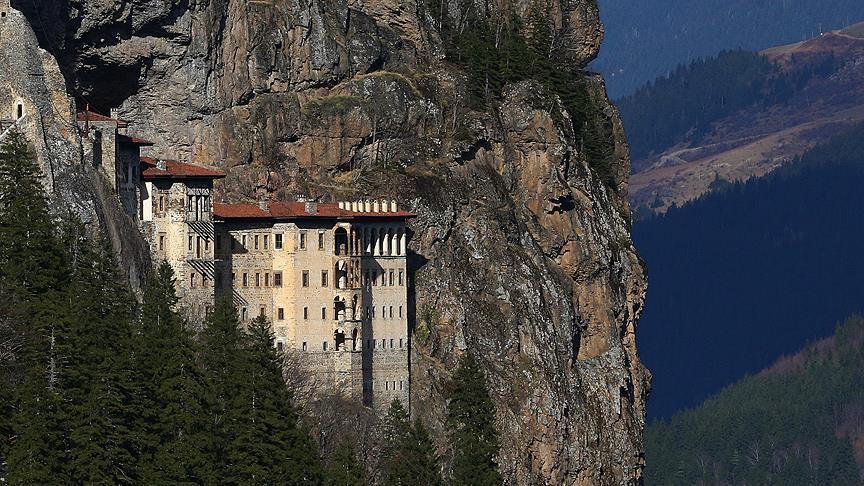
Restoration works at the Sumela Monastery, located in the Black Sea province of Trabzon and known as one of the oldest temples in the Christian world, are about to finish soon.
The monastery, one of the most important faith tourism centers of Turkey, was closed in 2015 due to the risk posed by rocks falling from the nearby Karadağ Mountain.
After 70 percent of the restoration work completed, the monastery was opened to the public last year, and now the remaining restoration works are nearing their end.
A large part of the “slope improvement work” carried out by a special team of industrial mountaineers to prevent the rocks and ice masses from falling and causing risks has been completed.
Within the scope of the project, heavy rocks posing danger to the safety of people and the region were brought down while risky areas were covered with steel nets
The iconic structure is expected to open to visitors in July after the restoration of the monastery rooms.
“We see and value what has been done here, but we had serious expectations for it to open up now,” said Hasan Volkan Kantarcı, a tourism professional from the Association of Turkish Travel Agencies, reminding about the request for the monastery to open by the beginning of July.
“After the opening, the restoration work of sections such as the chapel and some student rooms can continue. The entire complex may not be 100 percent open, but most of it will be open to visitors,” Kantarcı noted.
Osman Bektaş, a retired geology engineer from Karadeniz Technical University, also stated that the restoration work in the area took longer than expected.
“The monastery has been closed for years due to the danger of rockfall and restoration works. This is not a reasonable closure,” Bektaş noted.
Reminding that blasting works were carried out on rocks under the name of restoration work when for the first time, the danger of rocks falling on the slope came to the agenda, Bektaş underlined that the work done by blasting was wrong.
“Knitting with steel ropes is a much more accurate method. Blasting will cause new rock falls, and that’s what happened. The primary reason for the cracking of a 1,100-ton wedge-shaped rock was the blasting done initially,” Bektaş added.
The restoration should not have continued for five years in a place where 24 climbers and four engineers work today, according to the expert.
Named after Mother Mary, the monastery is located on the slope of Karadağ Mountain in the town of Maçka 300 meters above the Altındere Valley and was carved out of rocks in a wooded area.
As part of the project, some rocks that posed danger were brought down, some places were surrounded with steel webbing, and the inner parts of the Sumela Monastery, which was closed for almost five years, were restored.